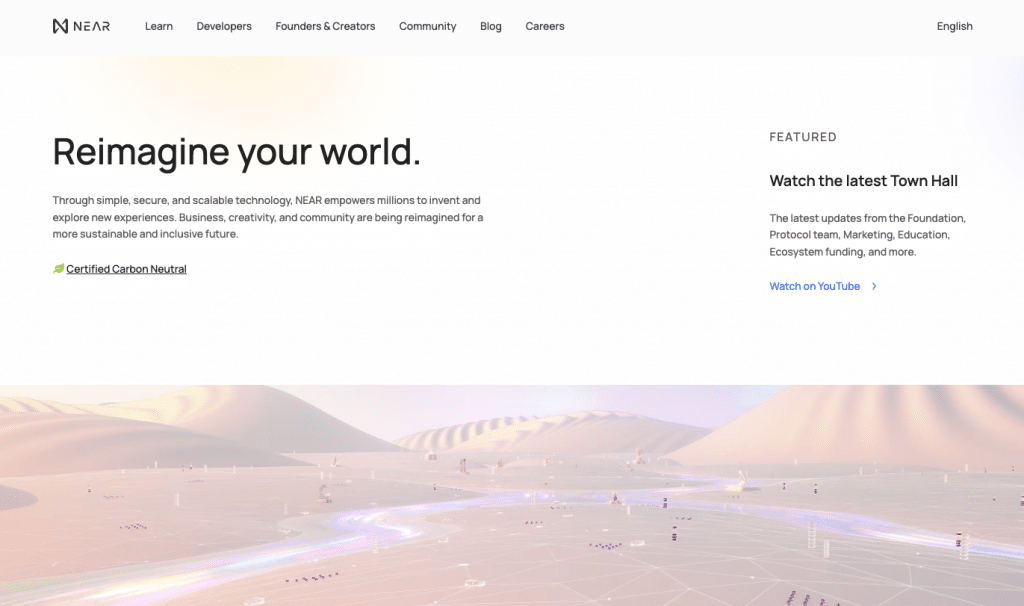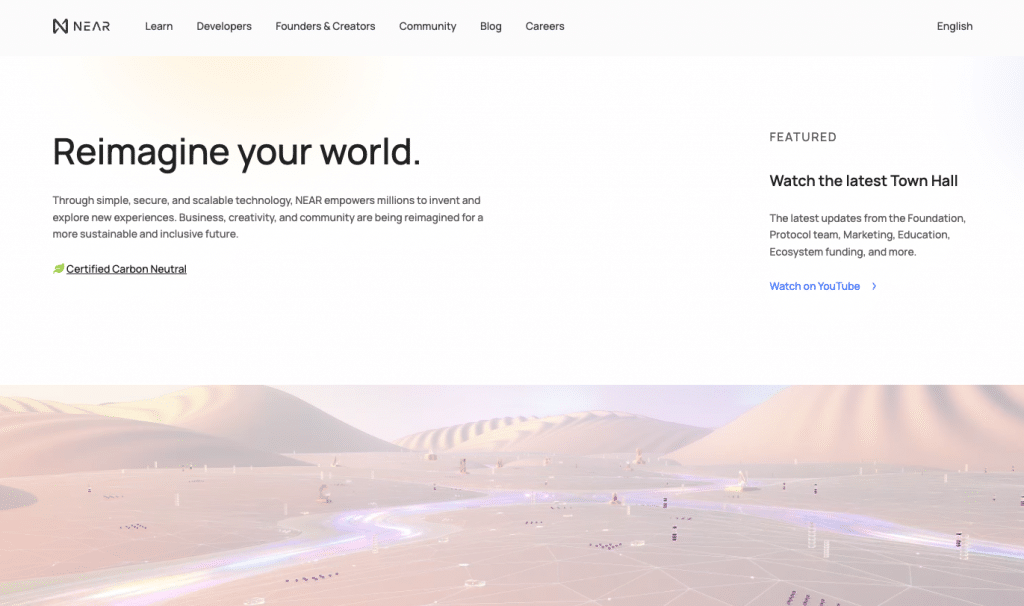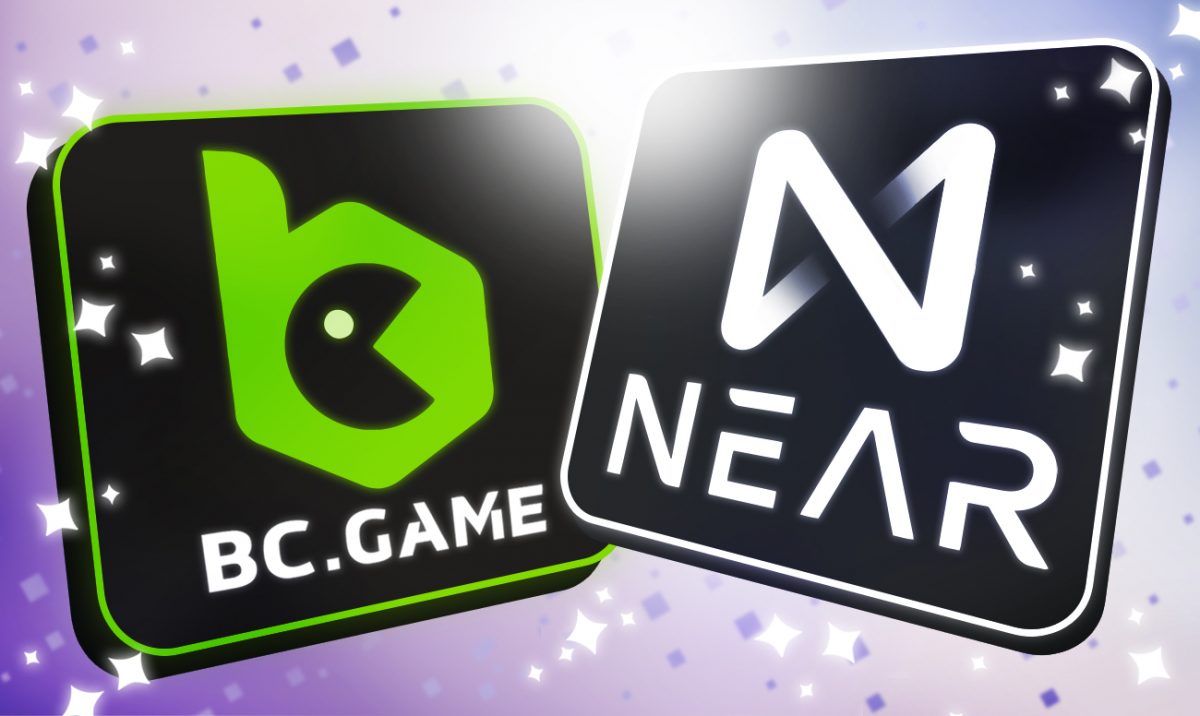The relevance of high-performance blockchains that provide high throughput, security, and scalability continues to rise. NEAR Protocol aims to provide such utility in an industry teeming with developers and their innovative ideas. BC.GAME saw this vision and decided to list NEAR tokens. The community, for sure, would be glad to engage with this high-potential token. In the crypto realm, scalability refers to the ability of a blockchain to perform efficiently. We all know that some networks feel pressure when there is an increase in usage and transactions. The scalability of NEAR becomes an Achilles heel for early blockchain networks relying on Proof of Work. Later blockchains came to build on the successes of these pioneers with a vision to add more and resolve earlier challenges. NEAR Protocol fits this mould and has evolved to be a go-to dApp development platform for DeFi and NFT creators across the globe.
Exploring NEAR Protocol

What is NEAR Protocol?
NEAR Protocol is a smart contract blockchain built by NEAR Collective. It intends to create a scalable and robust ecosystem for developers to launch decentralised applications (dApps). The goal is to create an efficient user experience necessary for the broader adoption of dApps. Accordingly, the NEAR Protocol has incorporated exciting features like human-readable account names, not the numbers and letters typical of cryptographic addresses. NEAR Collective, the blockchain development team, built this project from the ground up, emphasising ease of use for developers and dApp end-users from a decentralised storage system that’s secure and compliant with blockchain principles.
The blockchain uses a Proof-of-Stake consensus algorithm for block validation means that users must pledge a specific number of tokens to become validators on the network. Central to the protocol is the NEAR coin that’s used for paying transaction fees and storage. In the Proof-of-Stake consensus algorithm system, validators play a vital role in securing and decentralising any public chain, and the NEAR Protocol is no exception. For their participation, successful nodes—or “Fishermen” and validators are rewarded for block confirmation within an epoch and reporting malicious behaviours. At the same time, users—including developers who deploy smart contracts—are rewarded with NEAR for their contributions. The protocol has also incorporated a burning feature to reduce the overall supply of NEAR coins gradually.
How It Came About
Before embarking on blockchain development Illia Polosukhin and Alexander Skidanov operated NEAR as a machine-learning project. In late 2017, they initiated research into programmable smart contracts and cryptocurrency payments. Their machine learning project could not provide the robust infrastructure to propel that vision, and the idea of creating a blockchain project from the ground up came about. Their engineers started working on the NEAR Protocol a year later, rolling out a network that would adapt the more sustainable Proof-of-Stake (PoS) mechanism to support transaction verification and block production.
The NEAR Protocol blockchain

Implementation of Sharding for Scalability
Sharding is splitting a blockchain into multiple chains to prevent processing all data on a single blockchain at once. Instead, the network runs multiple shards, with NEAR Protocol’s implementation having its customised feel to suit the network’s ambitions. All shards, or “chunks”, are part of the blockchain network due to a process called Nightshade. Each shard has its validators, ensuring that transactions on NEAR don’t overlap. The shards’ independent processing capacity guarantees no load on a single main chain.
That said, the network uploads a snapshot of each shard’s current state as part of Nightshade. Nightshade ensures that the network still has a record of processed data on the shards, but the tasks are delegated to specific sub-chains. Therefore, shards operate smoothly but communicate and intersect as part of a common framework. The blockchain has better scalability because the transaction load is not overbearing on a single chain. NEAR Protocol’s blockchain became fully operational in 2020 when it became community-operated. The blockchain leverages its sharding and horizontal scaling to significantly increase the network’s processing capacity.
Interoperability With Other Blockchains
NEAR Protocol was launched in a world with existing smart contracts blockchains. Besides adding developers and users, creating a chain communicating seamlessly with other blockchains was vital. The network implements the Rainbow Bridge for efficient communication with Ethereum and other significant chains. Interoperability is a significant addition to this blockchain. Developers can transact between chains and transfer assets necessary for creating dApps and monetising their ideas. In addition to sharding, Aurora is a layer-2 protocol on top of the NEAR Protocol.
Coders can create decentralised applications that use the Ethereum Virtual Machine (EVM), ensuring that the dApps are Ethereum backed but deployable on the network. The Rainbow Bridge is crucial in ensuring that smart contract execution between the two chains is possible. Developers can also benefit from the low fees and scalability of the blockchain. These tools ensure that developers can create dApps without worrying about integration with other systems and blockchains. Additionally, transaction speeds are thousands of times faster than the Ethereum blockchain.
Network Governance
The NEAR Protocol whitepaper lays out the network governance model for the blockchain. The governance model identifies the technical governance aspects and resource governance. This protocol combines the need for combining community-led innovation with effective decision-making and execution. The NEAR Foundation, an independent non-profit organisation, coordinates decision-making. Node operators get a voice through their staked tokens and play a vital role in ensuring the network has decentralisation.
Partnerships and backers
NEAR protocol have only been operational for a few years, yet it has attracted significant project partnerships and venture capital backers. Projects on NEAR include Mintbase and Paras, both of which focus on NFTs and have become significant with their meteoric rise. Notable venture capital firms like Pantera Capital, Electric Capital, Dragonfly Capital, Coinbase Ventures, Blockchain.com, and Baidu Ventures have invested in NEAR Protocol. This level of involvement shows that industry leaders believe in NEAR to achieve its founders’ vision.
Conclusion
The NEAR Protocol aims to position itself as the favourite Launchpad for developers in the blockchain landscape. The present and future usefulness of dApps means that setting a protocol as the best solution for their operation is lucrative. The blockchain aims to deliver intuitive experiences for users and allow developers to scale the functionality of their applications and networks. BC.GAME hopes that this utility will prove meaningful for years to come. Online gambling enthusiasts can now wager and hold this token with similar hopes.
Exploring NEAR Protocol

What is NEAR Protocol?
NEAR Protocol is a smart contract blockchain built by NEAR Collective. It intends to create a scalable and robust ecosystem for developers to launch decentralised applications (dApps). The goal is to create an efficient user experience necessary for the broader adoption of dApps. Accordingly, the NEAR Protocol has incorporated exciting features like human-readable account names, not the numbers and letters typical of cryptographic addresses. NEAR Collective, the blockchain development team, built this project from the ground up, emphasising ease of use for developers and dApp end-users from a decentralised storage system that’s secure and compliant with blockchain principles.
The blockchain uses a Proof-of-Stake consensus algorithm for block validation means that users must pledge a specific number of tokens to become validators on the network. Central to the protocol is the NEAR coin that’s used for paying transaction fees and storage. In the Proof-of-Stake consensus algorithm system, validators play a vital role in securing and decentralising any public chain, and the NEAR Protocol is no exception. For their participation, successful nodes—or “Fishermen” and validators are rewarded for block confirmation within an epoch and reporting malicious behaviours. At the same time, users—including developers who deploy smart contracts—are rewarded with NEAR for their contributions. The protocol has also incorporated a burning feature to reduce the overall supply of NEAR coins gradually.
How It Came About
Before embarking on blockchain development Illia Polosukhin and Alexander Skidanov operated NEAR as a machine-learning project. In late 2017, they initiated research into programmable smart contracts and cryptocurrency payments. Their machine learning project could not provide the robust infrastructure to propel that vision, and the idea of creating a blockchain project from the ground up came about. Their engineers started working on the NEAR Protocol a year later, rolling out a network that would adapt the more sustainable Proof-of-Stake (PoS) mechanism to support transaction verification and block production.
The NEAR Protocol blockchain

Implementation of Sharding for Scalability
Sharding is splitting a blockchain into multiple chains to prevent processing all data on a single blockchain at once. Instead, the network runs multiple shards, with NEAR Protocol’s implementation having its customised feel to suit the network’s ambitions. All shards, or “chunks”, are part of the blockchain network due to a process called Nightshade. Each shard has its validators, ensuring that transactions on NEAR don’t overlap. The shards’ independent processing capacity guarantees no load on a single main chain.
That said, the network uploads a snapshot of each shard’s current state as part of Nightshade. Nightshade ensures that the network still has a record of processed data on the shards, but the tasks are delegated to specific sub-chains. Therefore, shards operate smoothly but communicate and intersect as part of a common framework. The blockchain has better scalability because the transaction load is not overbearing on a single chain. NEAR Protocol’s blockchain became fully operational in 2020 when it became community-operated. The blockchain leverages its sharding and horizontal scaling to significantly increase the network’s processing capacity.
Interoperability With Other Blockchains
NEAR Protocol was launched in a world with existing smart contracts blockchains. Besides adding developers and users, creating a chain communicating seamlessly with other blockchains was vital. The network implements the Rainbow Bridge for efficient communication with Ethereum and other significant chains. Interoperability is a significant addition to this blockchain. Developers can transact between chains and transfer assets necessary for creating dApps and monetising their ideas. In addition to sharding, Aurora is a layer-2 protocol on top of the NEAR Protocol.
Coders can create decentralised applications that use the Ethereum Virtual Machine (EVM), ensuring that the dApps are Ethereum backed but deployable on the network. The Rainbow Bridge is crucial in ensuring that smart contract execution between the two chains is possible. Developers can also benefit from the low fees and scalability of the blockchain. These tools ensure that developers can create dApps without worrying about integration with other systems and blockchains. Additionally, transaction speeds are thousands of times faster than the Ethereum blockchain.
Network Governance
The NEAR Protocol whitepaper lays out the network governance model for the blockchain. The governance model identifies the technical governance aspects and resource governance. This protocol combines the need for combining community-led innovation with effective decision-making and execution. The NEAR Foundation, an independent non-profit organisation, coordinates decision-making. Node operators get a voice through their staked tokens and play a vital role in ensuring the network has decentralisation.
Partnerships and backers
NEAR protocol have only been operational for a few years, yet it has attracted significant project partnerships and venture capital backers. Projects on NEAR include Mintbase and Paras, both of which focus on NFTs and have become significant with their meteoric rise. Notable venture capital firms like Pantera Capital, Electric Capital, Dragonfly Capital, Coinbase Ventures, Blockchain.com, and Baidu Ventures have invested in NEAR Protocol. This level of involvement shows that industry leaders believe in NEAR to achieve its founders’ vision.
Conclusion
The NEAR Protocol aims to position itself as the favourite Launchpad for developers in the blockchain landscape. The present and future usefulness of dApps means that setting a protocol as the best solution for their operation is lucrative. The blockchain aims to deliver intuitive experiences for users and allow developers to scale the functionality of their applications and networks. BC.GAME hopes that this utility will prove meaningful for years to come. Online gambling enthusiasts can now wager and hold this token with similar hopes.














